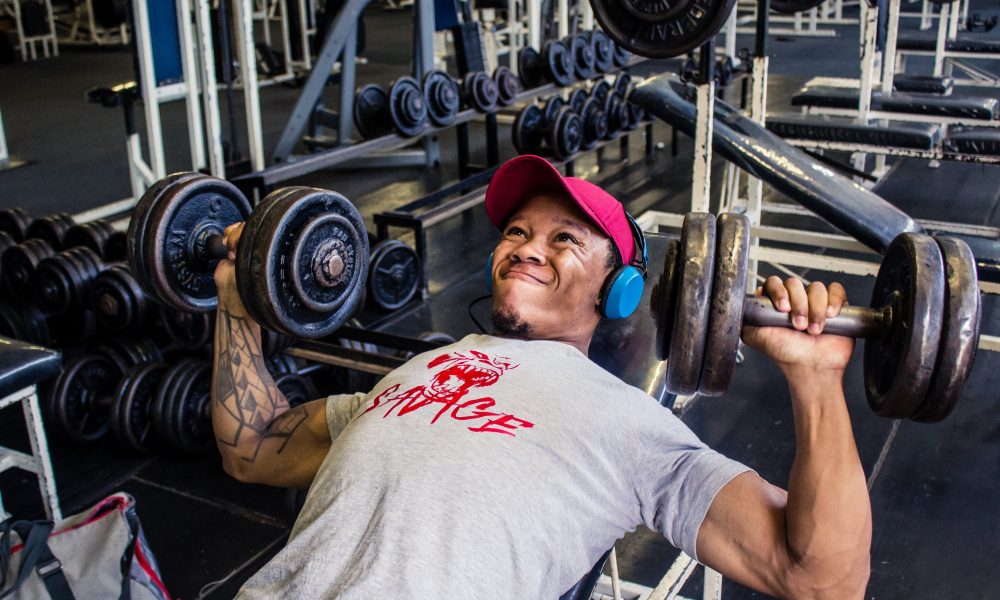- Carlson, Luke, et al. “Neither Repetition Duration nor Number of Muscle Actions Affect Strength Increases, Body Composition, Muscle Size, or Fasted Blood Glucose in Trained Males and Females.” Applied Physiology, Nutrition, and Metabolism = Physiologie Appliquee, Nutrition Et Metabolisme, U.S. National Library of Medicine, Feb. 2019, www.ncbi.nlm.nih.gov/pubmed/30067077.
- Schoenfeld, Brad J, et al. “Effect of Repetition Duration during Resistance Training on Muscle Hypertrophy: a Systematic Review and Meta-Analysis.” Sports Medicine (Auckland, N.Z.), U.S. National Library of Medicine, Apr. 2015, www.ncbi.nlm.nih.gov/pubmed/25601394.
- Schoenfeld, Brad Jon, et al. “Differential Effects of Attentional Focus Strategies during Long-Term Resistance Training.” European Journal of Sport Science, U.S. National Library of Medicine, June 2018, www.ncbi.nlm.nih.gov/pubmed/29533715.
- Tanimoto, Michiya, et al. “Effects of Whole-Body Low-Intensity Resistance Training with Slow Movement and Tonic Force Generation on Muscular Size and Strength in Young Men.” Journal of Strength and Conditioning Research, U.S. National Library of Medicine, Nov. 2008, www.ncbi.nlm.nih.gov/pubmed/18978616.
- Pareja-Blanco, F, et al. “Effect of Movement Velocity during Resistance Training on Neuromuscular Performance.” International Journal of Sports Medicine, U.S. National Library of Medicine, Oct. 2014, www.ncbi.nlm.nih.gov/pubmed/24886926.
- González-Badillo, Juan José, et al. “Maximal Intended Velocity Training Induces Greater Gains in Bench Press Performance than Deliberately Slower Half-Velocity Training.” European Journal of Sport Science, U.S. National Library of Medicine, 2014, www.ncbi.nlm.nih.gov/pubmed/24734902.
Department of Exercise and Sport Sciences. “Optimizing Power Output by Varying Repetition Tempo : The Journal of Strength & Conditioning Research.” LWW,
Hatfield DL;Kraemer WJ;Spiering BA;Häkkinen K;Volek JS;Shimano T;Spreuwenberg LP;Silvestre R;Vingren JL;Fragala MS;Gómez AL;Fleck SJ;Newton RU;Maresh CM; “The Impact of Velocity of Movement on Performance Factors in Resistance Exercise.” Journal of Strength and Conditioning Research, U.S. National Library of Medicine, pubmed.ncbi.nlm.nih.gov/17194227/.
Headley SA;Henry K;Nindl BC;Thompson BA;Kraemer WJ;Jones MT; “Effects of Lifting Tempo on One Repetition Maximum and Hormonal Responses to a Bench Press Protocol.” Journal of Strength and Conditioning Research, U.S. National Library of Medicine, pubmed.ncbi.nlm.nih.gov/20351575/.
M;, Shibata K;Takizawa K;Nosaka K;Mizuno. “Effects of Prolonging Eccentric Phase Duration in Parallel Back-Squat Training to Momentary Failure on Muscle Cross-Sectional Area, Squat One Repetition Maximum, and Performance Tests in University Soccer Players.” Journal of Strength and Conditioning Research, U.S. National Library of Medicine, pubmed.ncbi.nlm.nih.gov/30325791/.
Carzoli JP;Sousa CA;Belcher DJ;Helms ER;Khamoui AV;Whitehurst M;Zourdos MC; “The Effects of Eccentric Phase Duration on Concentric Outcomes in the Back Squat and Bench Press in Well-Trained Males.” Journal of Sports Sciences, U.S. National Library of Medicine, pubmed.ncbi.nlm.nih.gov/31418323/.
Chaves, Talisson Santos, et al. “Effects of Resistance Training with Controlled versus Self-Selected Repetition Duration on Muscle Mass and Strength in Untrained Men.” PeerJ, PeerJ Inc., 6 Mar. 2020, www.ncbi.nlm.nih.gov/pmc/articles/PMC7061915/.
PJ;, Sakamoto A;Sinclair. “Muscle Activations Under Varying Lifting Speeds and Intensities During Bench Press.” European Journal of Applied Physiology, U.S. National Library of Medicine, pubmed.ncbi.nlm.nih.gov/21735215/.
Vinstrup, Jonas, et al. “Focusing on Increasing Velocity during Heavy Resistance Knee Flexion Exercise Boosts Hamstring Muscle Activity in Chronic Stroke Patients.” Neurology Research International, Hindawi Publishing Corporation, 2016, www.ncbi.nlm.nih.gov/pmc/articles/PMC4976165/.
Häkkinen K;Pakarinen A;Kyröläinen H;Cheng S;Kim DH;Komi PV; “Neuromuscular Adaptations and Serum Hormones in Females During Prolonged Power Training.” International Journal of Sports Medicine, U.S. National Library of Medicine, pubmed.ncbi.nlm.nih.gov/2187004/.
Newman, et al. “Effect of Movement Velocity During Resistance Training on Dynamic Muscular Strength: A Systematic Review and Meta-Analysis.” Sports Medicine, Springer International Publishing, 1 Jan. 1970, link.springer.com/article/10.1007/s40279-017-0676-4.
Ahlborg, B., et al. “Endurance Capacity of Untrained Males and Females in Isometric and Dynamic Muscular Contractions.” European Journal of Applied Physiology, Springer-Verlag, 1 Jan. 1972, link.springer.com/article/10.1007/BF00422739.
K;, Häkkinen. “Force Production Characteristics of Leg Extensor, Trunk Flexor and Extensor Muscles in Male and Female Basketball Players.” The Journal of Sports Medicine and Physical Fitness, U.S. National Library of Medicine, pubmed.ncbi.nlm.nih.gov/1798300/.
Kinesiology, 1Department of. “The Relationship Between Muscle Action and Repetition… : The Journal of Strength & Conditioning Research.” LWW, journals.lww.com/nsca-jscr/Fulltext/2014/09000/The_Relationship_Between_Muscle_Action_and.7.aspx.
Sowell, Elizabeth R, et al. “Sex Differences in Cortical Thickness Mapped in 176 Healthy Individuals between 7 and 87 Years of Age.” Cerebral Cortex (New York, N.Y. : 1991), U.S. National Library of Medicine, July 2007, www.ncbi.nlm.nih.gov/pmc/articles/PMC2329809/.
Schuenke MD;Herman JR;Gliders RM;Hagerman FC;Hikida RS;Rana SR;Ragg KE;Staron RS; “Early-Phase Muscular Adaptations in Response to Slow-Speed Versus Traditional Resistance-Training Regimens.” European Journal of Applied Physiology, U.S. National Library of Medicine, pubmed.ncbi.nlm.nih.gov/22328004/.
- Laboratory, 1Weight Training. “Does the Muscle Action Duration Induce Different Regional… : The Journal of Strength & Conditioning Research.” LWW, journals.lww.com/nsca-jscr/Abstract/9000/Does_the_Muscle_Action_Duration_Induce_Different.94142.aspx.
Goto, Kazushige, et al. “Hormonal and Metabolic Responses to Slow Movement Resistance Exercise with Different Durations of Concentric and Eccentric Actions.” European Journal of Applied Physiology, Springer-Verlag, 10 May 2009, link.springer.com/article/10.1007%2Fs00421-009-1075-9.
Pereira, Paulo Eduardo. “(PDF) Resistance Training with Slow Speed of Movement Is Better for Hypertrophy and Muscle Strength Gains than Fast Speed of Movement.” ResearchGate, www.researchgate.net/publication/305676699_Resistance_training_with_slow_speed_of_movement_is_better_for_hypertrophy_and_muscle_strength_gains_than_fast_speed_of_movement.
- Azevedo, Paulo H.S.M., et al. “Effect of Different Eccentric Tempos on Hypertrophy and Strength of the Lower Limbs.” Biology of Sport, Termedia, 1 June 2021, www.termedia.pl/Effect-of-different-eccentric-tempos-on-hypertrophy-and-strength-of-the-lower-limbs,78,43851,0,1.html.





